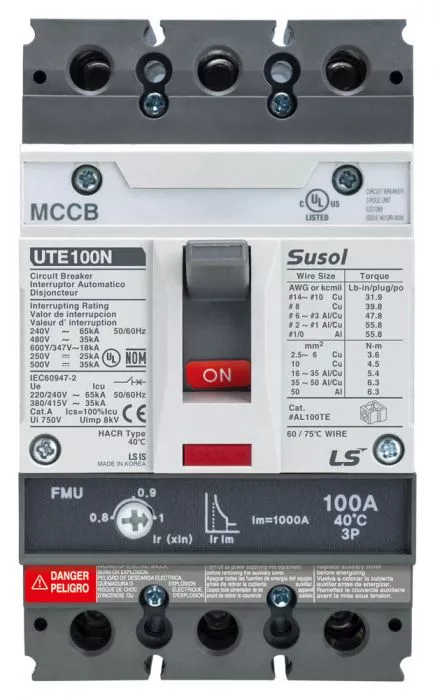Definition
A trip-free circuit breaker is a type of circuit breaker that cannot be forcibly held closed (or in the "on" position) during an overcurrent or fault condition. In simpler terms, even if someone tries to manually keep the circuit breaker "on", it will still "trip" or automatically turn off if a fault is detected. A trip-free circuit breaker is commonly used in electrical distribution systems to prevent damage to electrical equipment and circuits in the event of overcurrent or short-circuit conditions. The term "trip-free" refers to a specific feature of the circuit breaker, which distinguishes it from other types of circuit breakers.
In a conventional circuit breaker, there are typically two modes of operation:
- Trip Mode
- When an overcurrent or short-circuit condition occurs, the circuit breaker trips and interrupts the flow of electrical current. In this mode, the circuit breaker's handle or lever is physically moved to the "OFF" position.
- Reset Mode
- After the circuit breaker has tripped and the fault condition has been resolved, it can be manually reset by moving the handle or lever back to the "ON" position. This manual reset allows the circuit to be re-energized.
A trip-free circuit breaker, on the other hand, has a feature that prevents the immediate resetting of the circuit breaker while there is still an ongoing fault condition or overcurrent situation. In other words, even if someone tries to manually reset the circuit breaker, it will not reset until the fault is cleared or the overcurrent condition subsides.
This feature is designed to enhance safety by ensuring that the circuit breaker remains in the "OFF" position as long as there is a potentially hazardous electrical fault. It prevents accidental or deliberate attempts to reset the circuit breaker in situations where doing so could lead to electrical hazards or equipment damage.
Importance of Trip-Free Circuit Breakers
- Safety
- Ensuring that the circuit breaker trips under fault conditions protects both equipment and people from electrical hazards. For example, if there is a short circuit, and the breaker doesn't trip because someone is holding it in the "on" position, it could cause a fire or other dangerous situations.
- Equipment Protection
- Electrical equipment can be damaged by overcurrent situations. Trip-free functionality ensures that devices are not exposed to potentially damaging conditions for longer than necessary.
- Prevents Misuse
- There may be situations where, due to impatience or misunderstanding, someone might try to hold the circuit breaker in the "on" position, thinking it's tripping without a reason. Trip-free functionality prevents this kind of misuse.
It's worth noting that most modern circuit breakers incorporate trip-free mechanisms as a standard feature due to the safety and protective benefits it provides.
